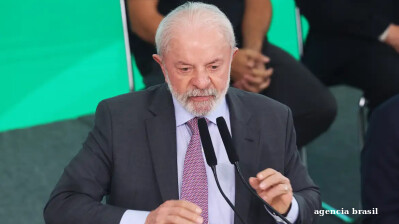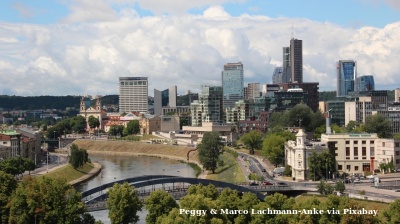The three Baltic states, Lithuania, Latvia and Estonia, are mulling alternative options for the region's massive and troubled Rail Baltica project as the forecast rosts rise to more than €15bn, according to a report in ERR.ee, the website of Estonia’s national broadcaster ERR.
The European Commission, which is funding a large part of the costs, wants the three countries to initially focus solely on the main route of Rail Baltica, which is meant to run from Tallinn across the three Baltic countries to connect to the Polish rail network to Warsaw.
Over the past year, Rail Baltica has undergone significant budget cuts, most notably reflected in the project's stakeholders' claims that a single track is as good as two.
However, the three countries are still considering a range of options including missing out Riga as well as Vilnius in the first stage in order to cut costs. There is also discussion about involving private investors to avoid overburdening the region's taxpayers at a time when budgets are already under strain, not least because of soaring defence spending to meet the Russian threat.
In 2017, the participating countries believed that constructing the railway would cost a total of €5.7 billion. In 2022, new calculations estimated that fully completing Rail Baltica would require €13.9 billion. By July 2023, another analysis even projected the railway's cost at a massive €25 billion.
At a midsummer meeting last year, discussions began on whether and how the project could be divided into parts, so that only the most critical sections would be completed by 2030. Continuing on the current path was described by the joint venture RB Rail in a subsequent meeting as, "start everything and finish nothing".
Although the public broadcaster was not invited to that meeting, the slides presented give a sense of the atmosphere in the room. "Funding Rail Baltica may require an additional national contribution of €13bn-19bn by 2030," stated the header of one table.
By that time, all participants understood that anything non-essential would be postponed indefinitely. However, the determination of what is essential remains a topic of debate among the countries involved.
The European Commission's stance is clear: essential is what contributes to the creation of the pan-European TEN-T network.
"We expect a joint proposal from the member states outlining the construction of this core network," emphasized Vivian Loonela, head of the Commission's Estonian office. "By core network, we mean the first phase, which is the Tallinn-Warsaw line, and it must be completed by 2030."
However, the Baltic capitals see a more varied picture, and when delving into the details, there are at least three different visions of the core network. In many discussions, the concepts of "core network" and "essential" merge.
"We do not yet have a final agreement with Latvia and Lithuania on what, in addition to this north-south main route, will be built," Andres Lindemann, head of Rail Baltica at the Estonian Ministry of Climate, told ERR.
Several ideas have been proposed during negotiations. For example, the cheapest solution, costing €11.7 billion, would limit the train speed between Surju and Haademeeste in south Parnu County to 160 kilometres per hour.
However, in the context of the entire project, such concessions would save only a small amount. More complex and expensive decisions have long included connecting Riga, connecting Vilnius, and constructing a new railway from Klaipeda towards Poland. Although a final solution is not yet in place, interviews suggest that the main outlines of the agreement were sketched out on paper in January.
The Baltic states were under pressure to align their messages by the need to submit applications for the next round of the Connecting Europe Facility by the end of January. A clear vision of the project's scope would earn additional points in the application assessment.
Thus, representatives of the three Baltic countries gathered for a crucial meeting in mid-January. By then, all had agreed that a single track would be initially built for most of the railway, but key issues, including the connection of the capitals of Latvia and Lithuania, still awaited decisions.
"The cheapest option proposed that Riga would not be connected by a new European-gauge railway but would require passengers to transfer to an existing train outside Riga," said Marko Kivila, CEO of RB Rail.
This would save about €300 million, but the dream of reaching Riga from Tallinn in one hour and 42 minutes would be indefinitely postponed. Negotiations led to a solution that could be described as "if you can't do it all, do half".
Rail Baltic Estonia's CEO, Anvar Salomets, stated that entry into Riga is feasible by 2030. At the same time, he noted that Latvian colleagues are still developing the technical calculations related to the connection, and the exact schedule and budget depend on these.
While discussions in Latvia are moving towards the prospect of new tracks for their capital by 2030, the outlook for Lithuania is gloomier. It is likely that the European high-speed rail will bypass Vilnius by about 100 kilometres.
The Lithuanian part of the project notes on its website that work between Vilnius and Kaunas is progressing rapidly. Planning solutions are already being introduced in public discussions, and the company promises to organize a design tender even before the planning is confirmed.
Marko Kivila said that negotiations with Lithuania have been challenging."From the beginning, Lithuania believed that Rail Baltica should connect all the capitals," said Kivila.
However, the connection of Vilnius does not align with the European Commission's vision of prioritizing the main route. Therefore, according to Marko Kivila, the Lithuanians agree that connecting Vilnius is the second priority. But on the condition that they do not completely lose the 2030 perspective.
Although the Rail Baltica project has also become significantly more expensive for Estonia, the estimated cost for the Estonian section of the railway is about €3 billion. RB Rail estimates the cost of the Latvian section at approximately €6.4 billion and the Lithuanian section at €5.6 billion, ERR.ee said.
News

Russia will remain defiant against US sanctions pressure, Putin claims
The sanctions come at a time when Russia’s two largest energy buyers, China and India, have shown signs of reducing their oil imports from Russia.

Russia rules out seizing EU assets but warns of retaliation if confiscations proceed
Russia will not seize European Union assets currently operating within its borders, Russian Deputy Finance Minister Alexei Moiseev has said.

China’s state-owned oil giants halt Russian crude purchases in response to US sanctions
China’s state-owned oil giants have paused their purchase of Russian crude oil in response to recent US sanctions targeting Moscow’s two largest oil firms, Rosneft and Lukoil

Switzerland reopens Baghdad embassy after 30-year closure
Switzerland reopened its Baghdad embassy after 30 years, with Iraqi and Swiss foreign ministers officiating ceremony reflecting confidence in Iraq's stability and signalling expanded economic cooperation.




